This guide to Tour du Mont Blanc Stage 10 will help you plan the route from Tré-le-Champ to Lacs des Chéserys, a short day that ends with a magnificent campsite.
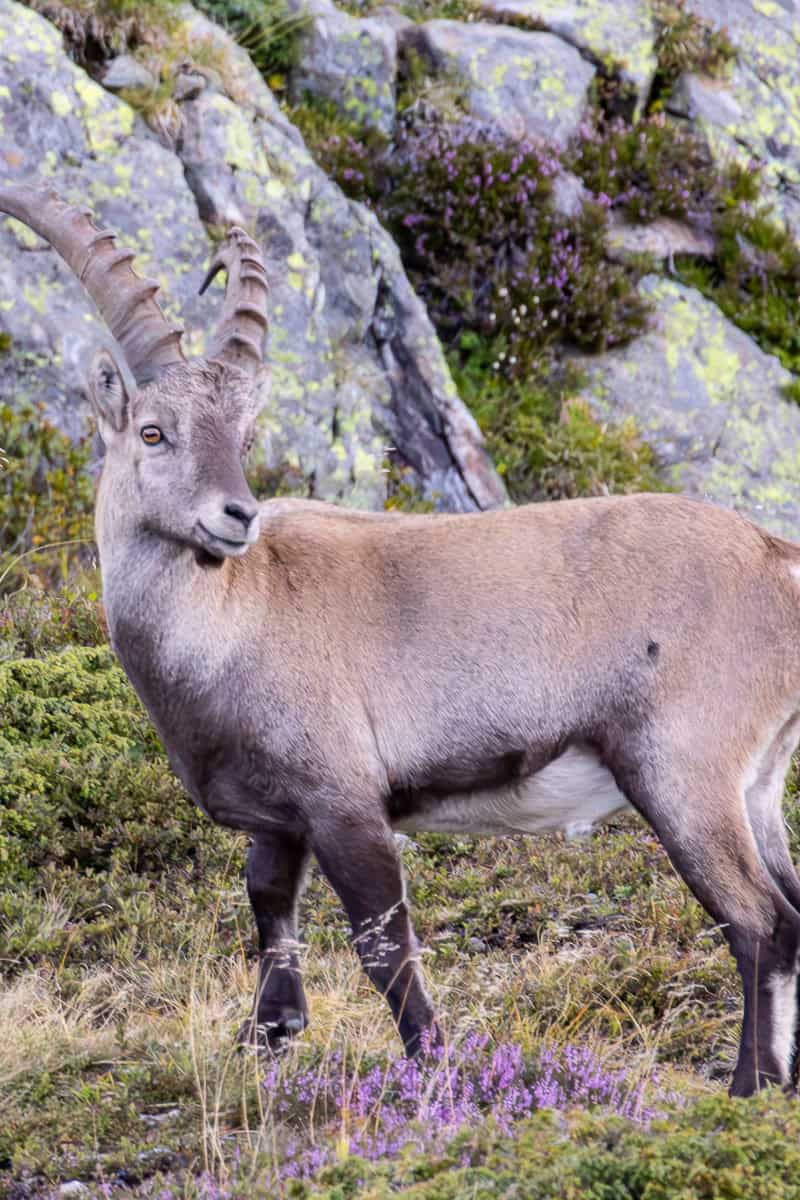
After concluding a mostly foggy trek on Stage 9, Stage 10 on the Tour du Mont Blanc would reward us with some of the most exceptional views (and cute animal encounters!) of our entire hike.
Tour du Mont Blanc Stage 10: Activity Profile
This was a much shorter hiking day than most hikers plan for their TMB trek. Planning for a short day near the end allowed us to have some wiggle room for weather, since the day could be combined with another if needed. It also gave us a partial rest day.
- 3 miles
- 2,762-foot ascent
- 115-foot descent
The Goal
Today the goal was to conquer the TMB ladders (more on that below) and wild camp at Lacs des Chéserys. I also had hopes and dreams of seeing wild ibex on this day, since we’d be camping where they live.
The Tour du Mont Blanc Stage 10 Ladders
The original Tour du Mont Blanc trail from Tré-le-Champ includes an infamous series of nine metal ladders bolted into the mountain, allowing hikers to climb directly up the cliff face.
If that does not sound like something you’d enjoy, there are other alternative routes to skip the ladders entirely. The benefit of the ladder route is that it’s less strenuous to climb a ladder up the cliff than to walk up steep switchbacks.
Personally, I’m somewhat afraid of heights and had been dreading this section.
That said, I kept reminding myself of other trails I’ve done with ladders and that I’d been (mostly) fine on, such as the Mesa Verde cliff dwelling tours, Red River Gorge’s Jailhouse Rock trail and (the terrifying) Beehive Trail in Acadia.
Tré-le-Champ to the Ladders
The TMB ascends steeply out of Tré-le-Champ, rising about 1500 feet in elevation within just a mile and a half. (Once again, math fans, that’s about 1,000 feet per mile.)
Here are my gear recommendations for the TMB.
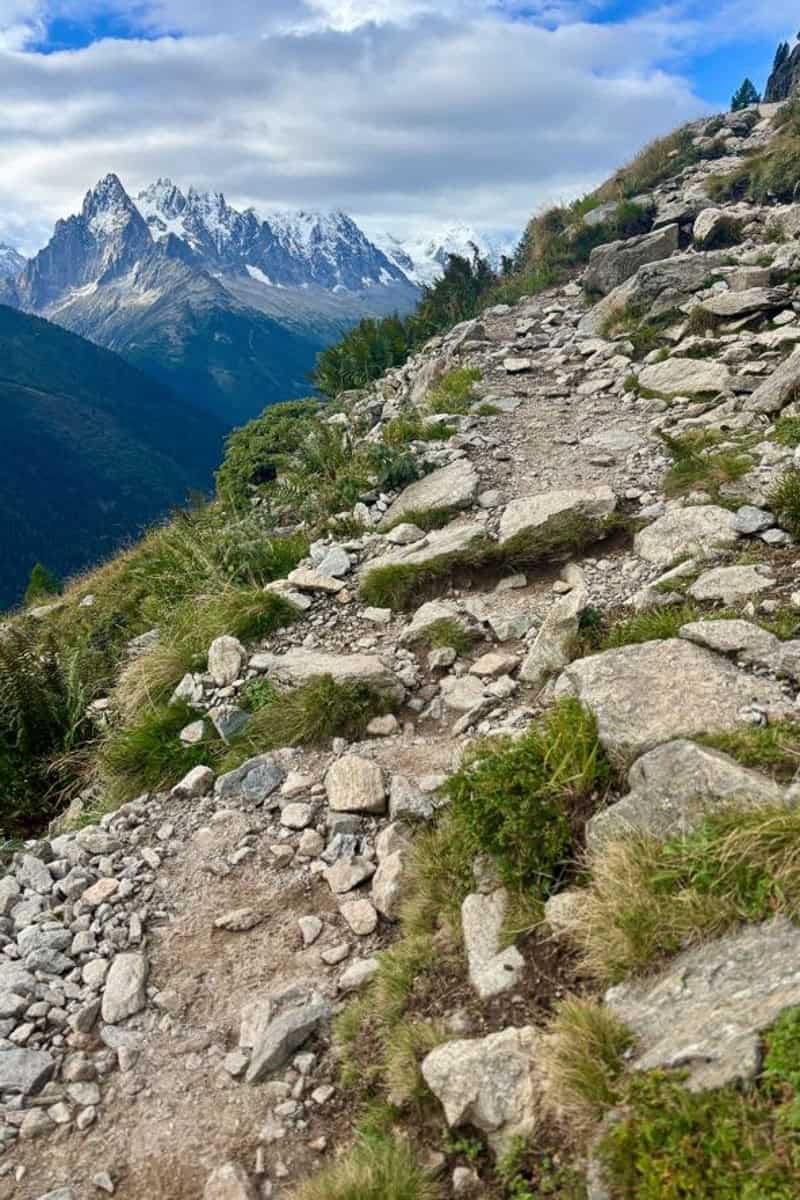
And then, before you know it, you’ve reached the ladders. We packed up our trekking poles and began the ascent.

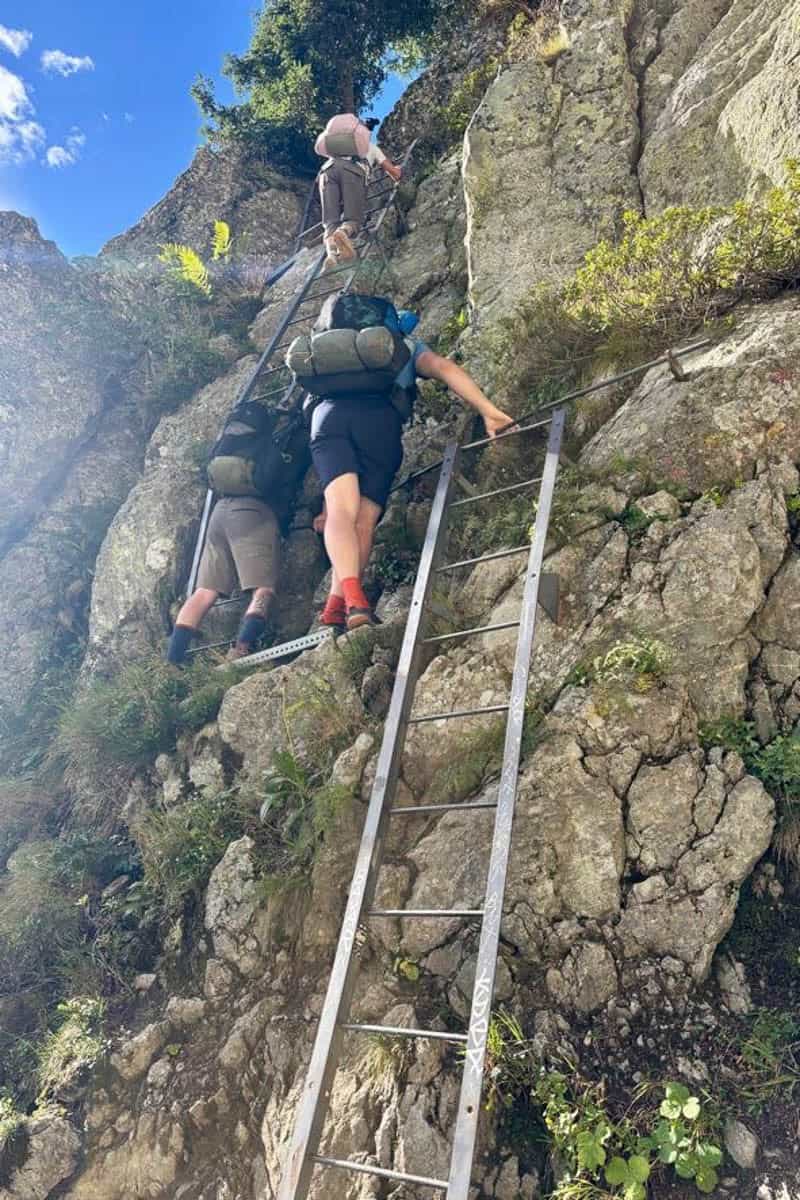
I actually found the ladders to be very sturdy and climbing them wasn’t as terrifying as I anticipated.
The wooden steps pictured below, on the other hand, are a different story. They felt wobbly, were a little too far apart for my short legs, and made me much more nervous than the metal ladders.

Just as you think you’ve finished the ladders (because they seem to end and you’re back to a scrambly trail), there are... more ladders.
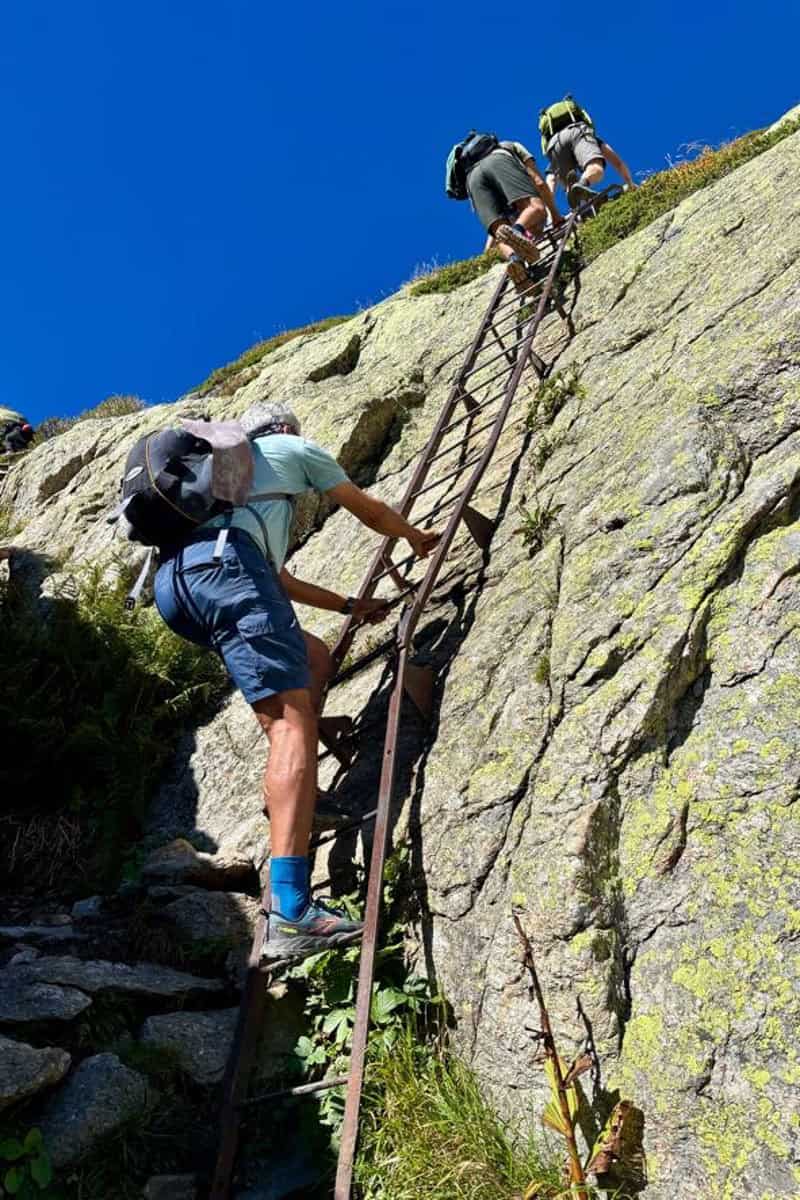
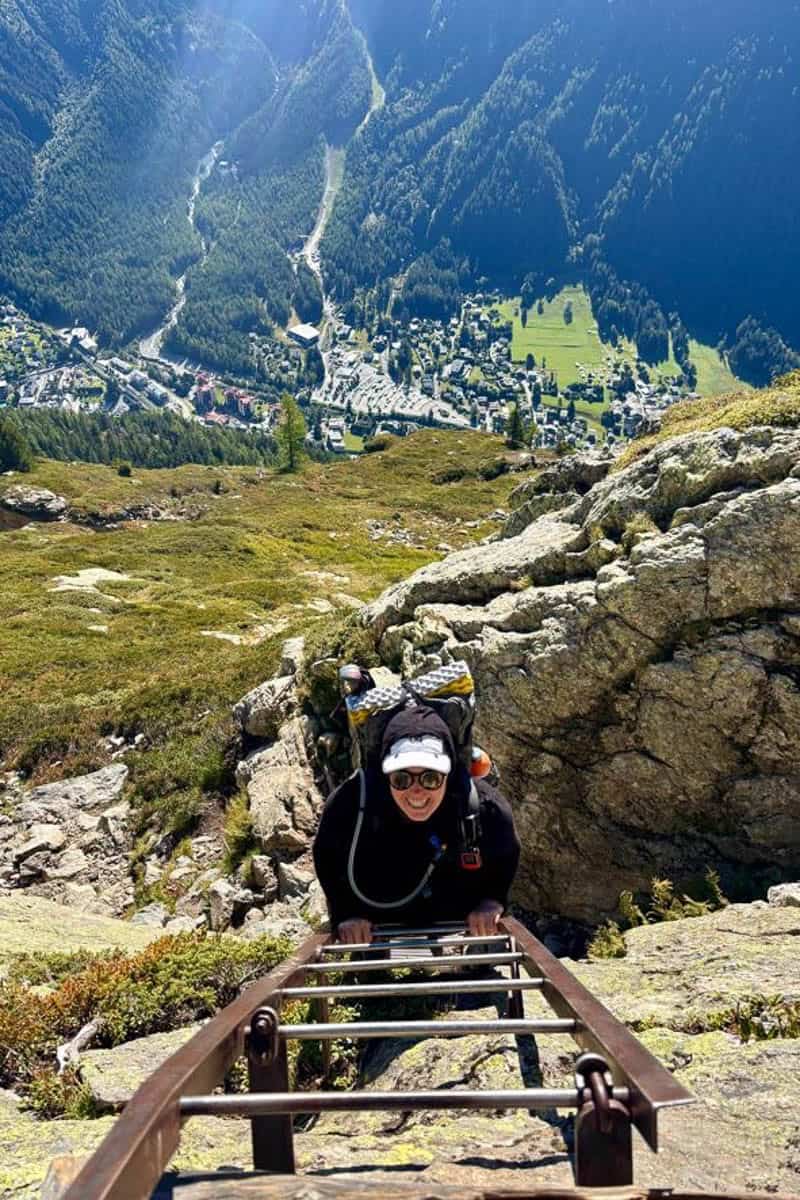
Eventually, the ladders really are over (unless you head to Lac Blanc later, but that’s another story).
Keep going and very soon the trail arrives at the almost impossibly beautiful Lacs des Chéserys.

Wild Camping Rules at Lacs des Chéserys
Wild camping is permitted around Lacs des Chéserys, but a free permit is needed.
Apply for the permit here, and choose the Aiguilles Rouges' National Nature Reserves option.
Note that this is wild bivouac camping, which is different than most wild camping options we have in the USA.
The spots are first-come first-serve, but you are not allowed to pitch your tent before 7 p.m., and your tent must be down before 9 a.m. In other words, you can arrive early and sit in your chosen camp area with your backpack, but you cannot pitch camp until evening.
The idea aligns with Leave No Trace principles, in that campers “leave no trace” of their presence and allow other visitors to see the pristine alpine lake without tents everywhere.
Unlike the other bivouac sites we used in France, this one had zero restroom facilities. The rocky ground was incredibly hard to dig in, so even though a WAG bag is not required, it’s a good idea.

Our Wild Camping Experience at Lacs des Chéserys
We arrived at the lakes area just before lunchtime, which seemed like an insanely early time to stop hiking. I arrived a few minutes after my husband, who had already looked around and picked out where he wanted to camp that evening.
So we took out our sit pads and relaxed by the water. And we waited.
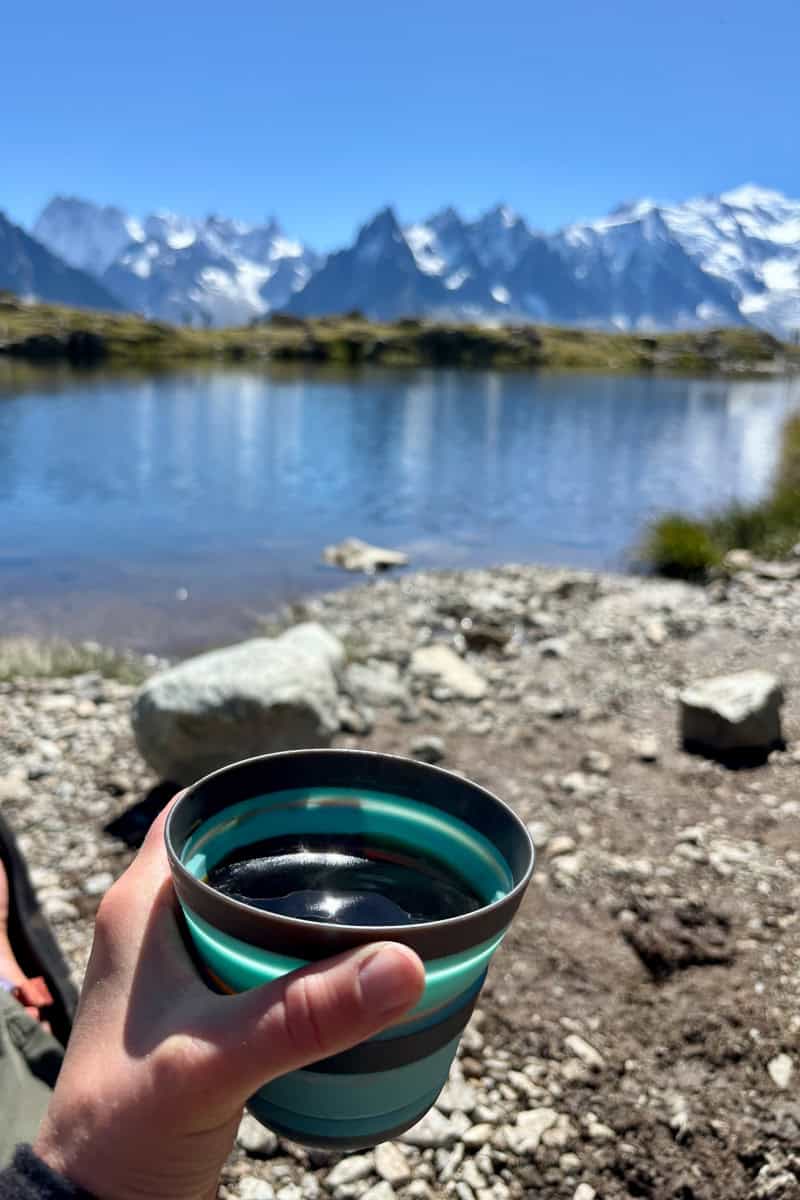
As the day wore on, the lake was busy with hikers who stayed a few moments and left.
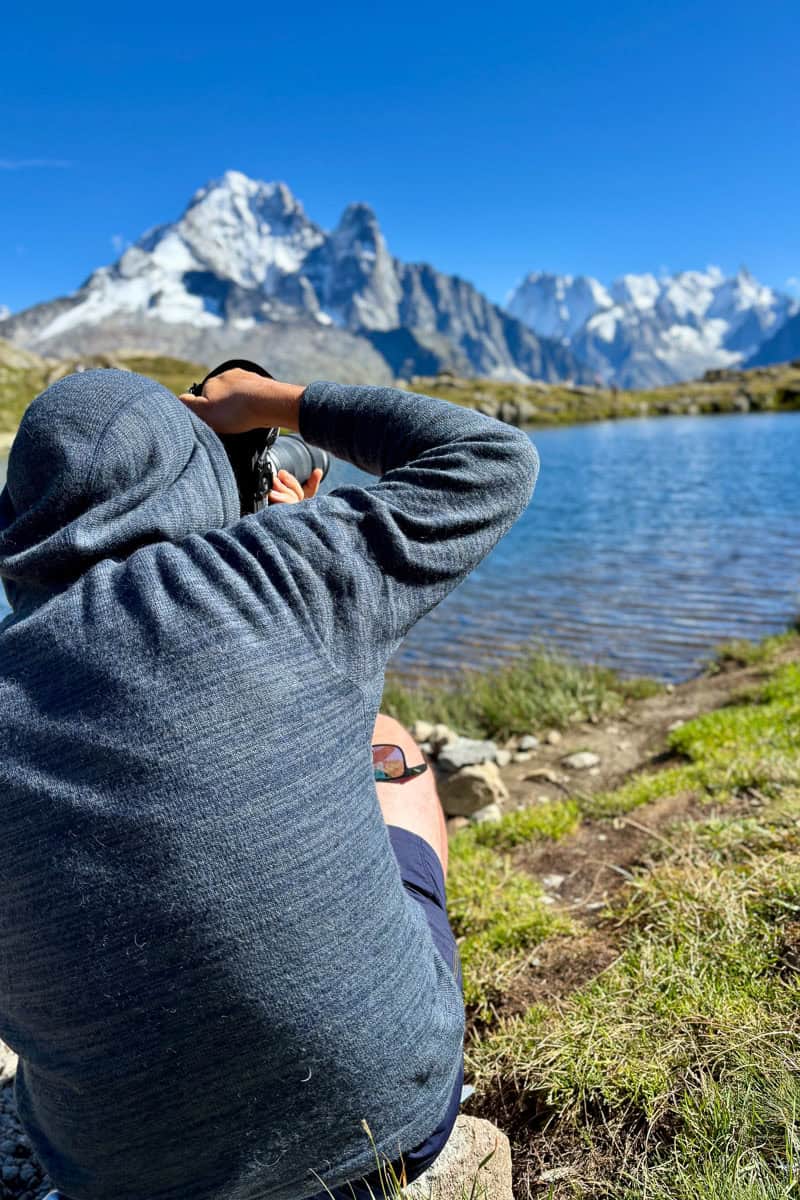
Eventually, the remaining three spots at the little beach area were also claimed. Across the lake, we saw a handful of campers settling in to wait at areas that also looked like gorgeous camp spots.
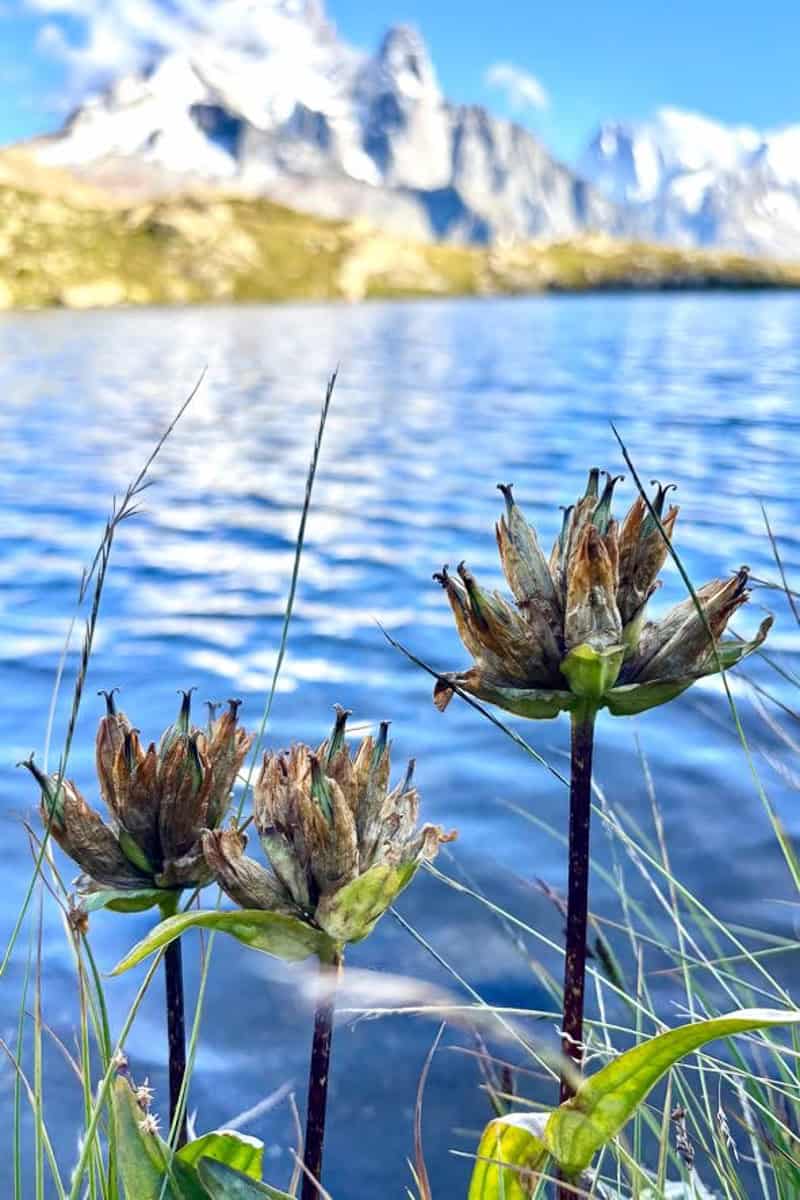
We chatted with the other campers on our beach. We divided up leftover foods and supplies, since all but one of us was finishing our hike the next day.
While we waited, I mentioned that I was hoping to see ibex, but assumed they wouldn’t appear until after the majority of visitors left for the day.
First, we saw a marmot popping his little head up in the distance. What a cutie.
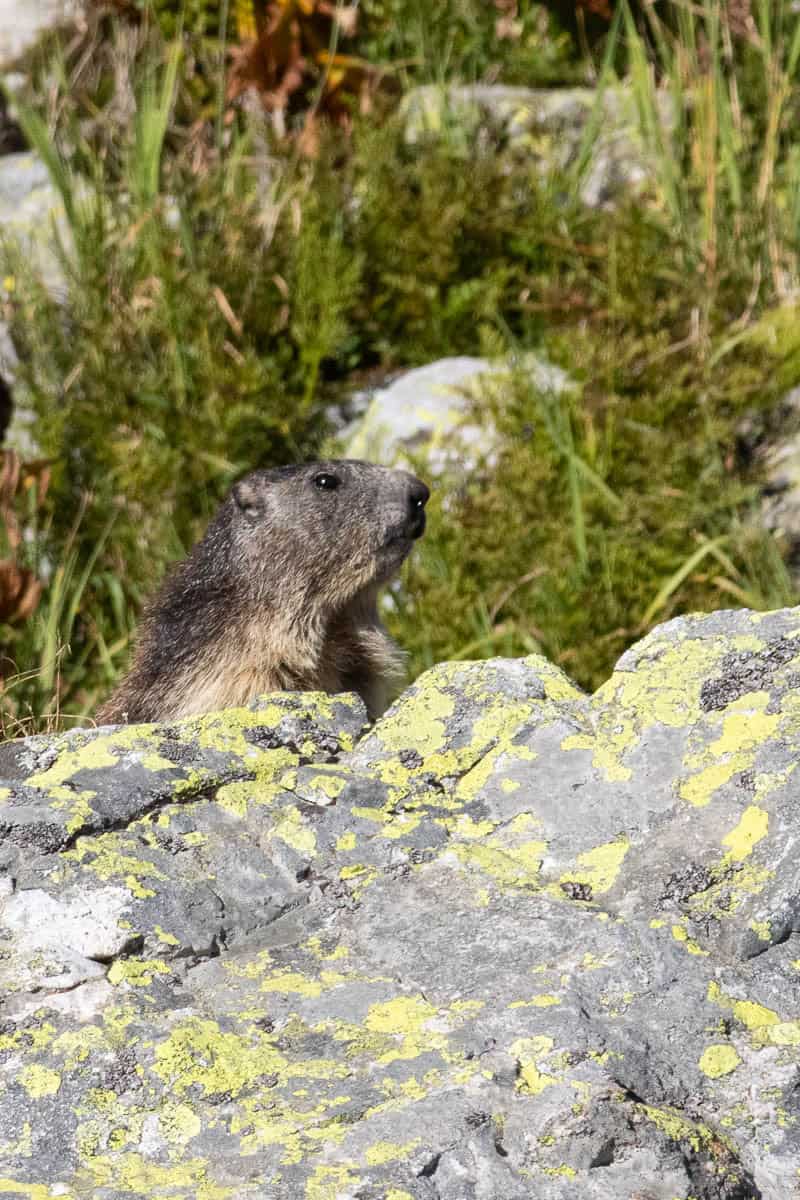
And then, it happened. Out of the corner of my eye, I saw the silhouettes of two animals at the top of the rock wall. (We only caught one of them in the photo below.)

At first I thought they were fake, because it reminded me of those fake deer people sometimes put in their yards in the country. (Is that a thing other places? Or just in rural Appalachia?)
They weren’t fake. Other campers called down that there was a whole herd on the other side of the rocks. We quickly and quietly moved to a better viewing area, and all my ibex dreams came true.
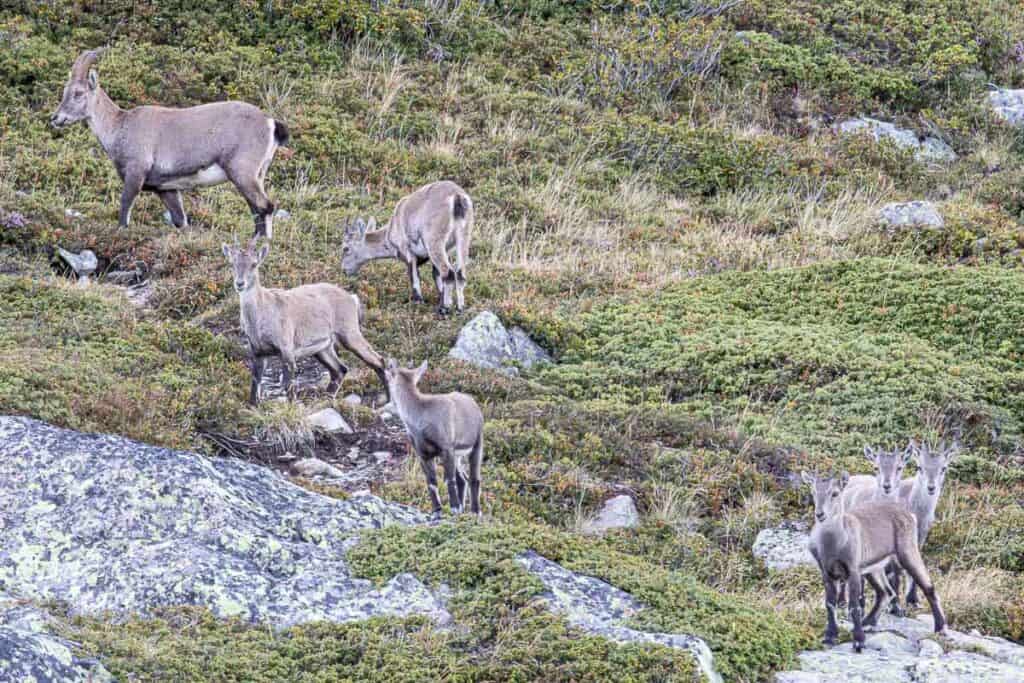
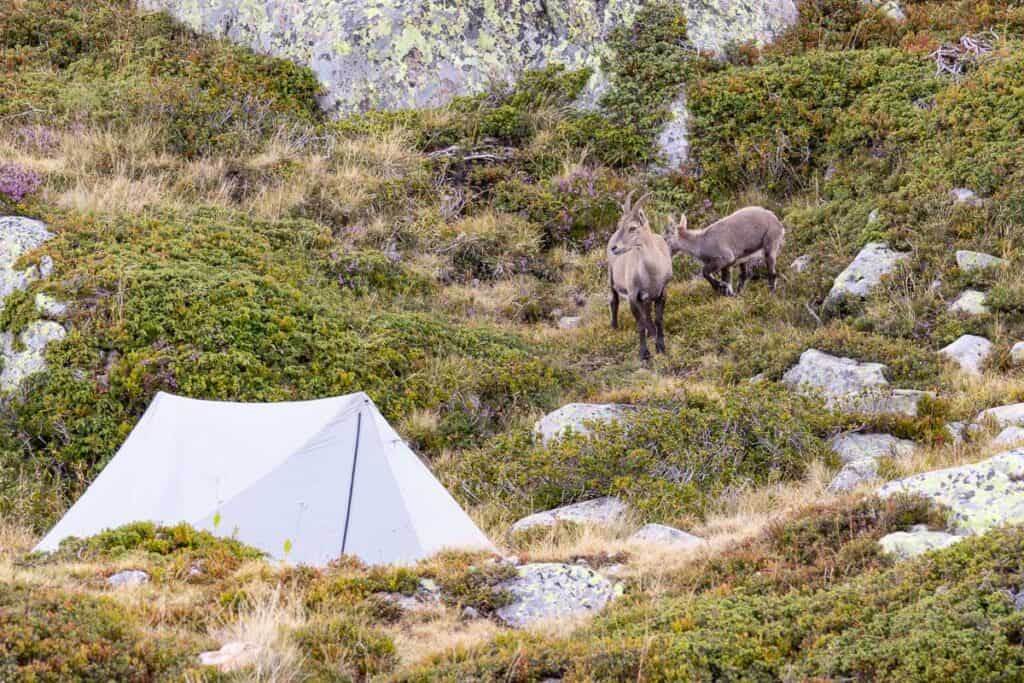
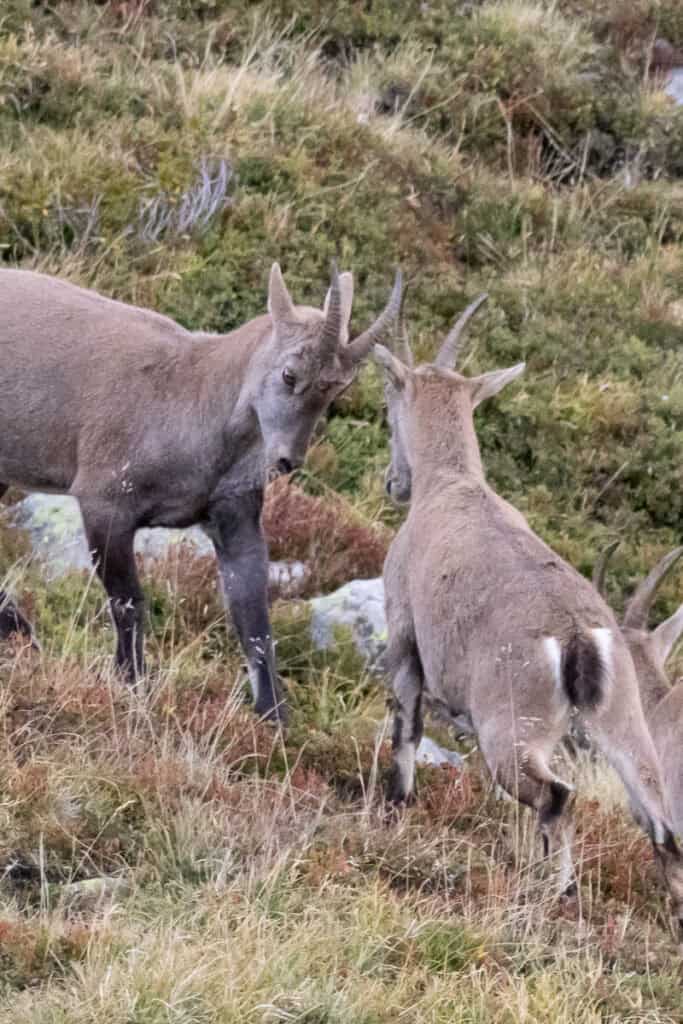
After we wandered back to camp, the herd followed and we got to watch them even longer.
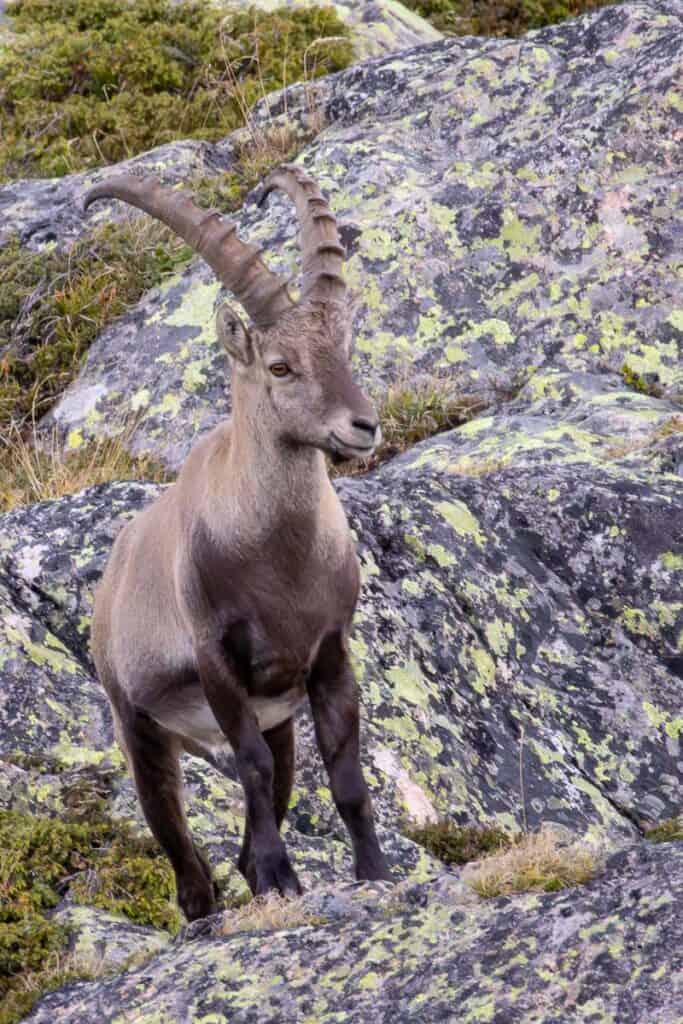
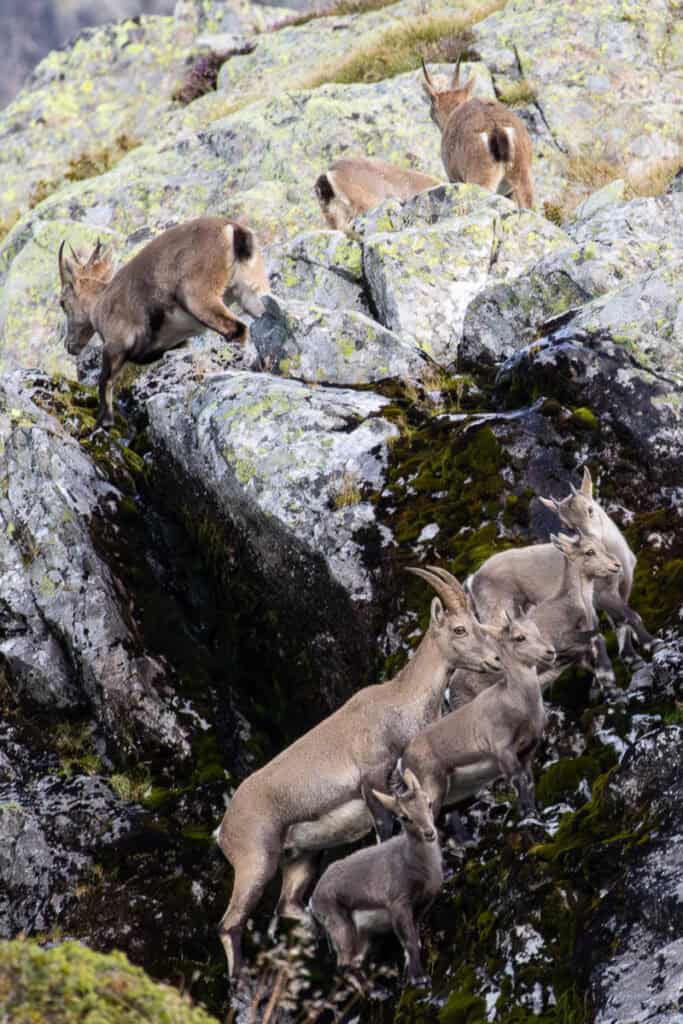
Around this time, the bases of the nearby mountains began to glow pink with the setting sun.
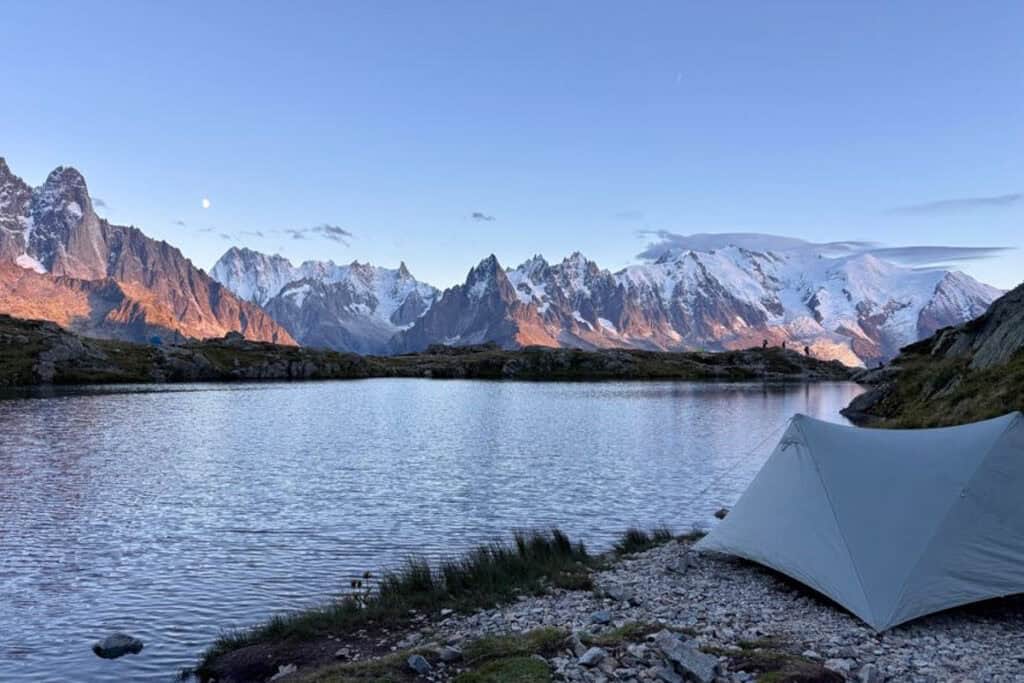
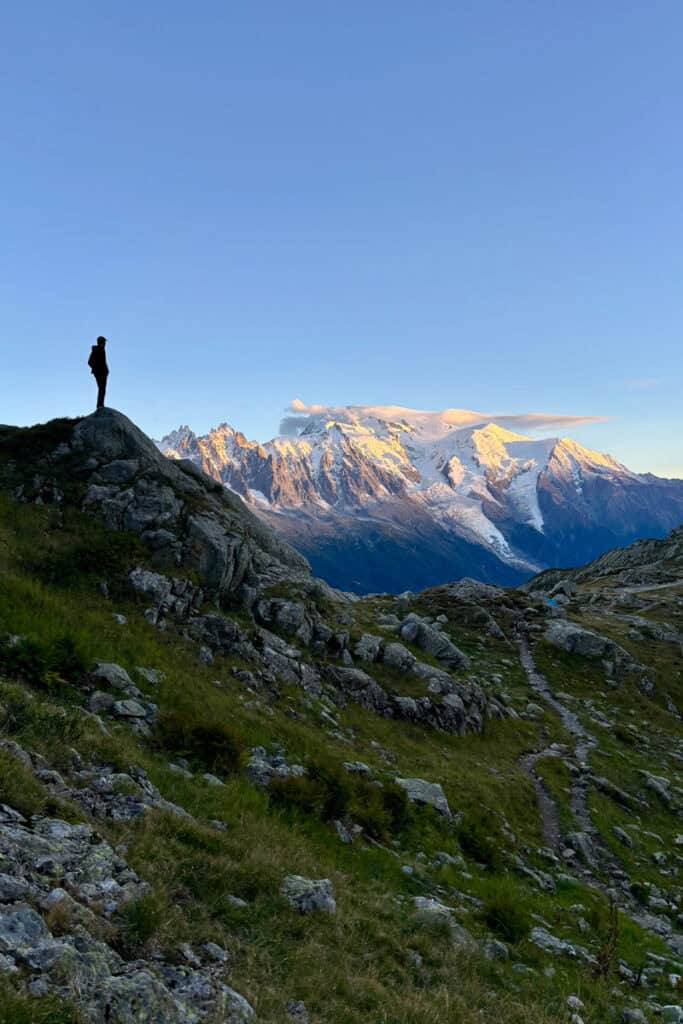
As evening settled in, the moon reflected beautifully onto the still lake water.

The only word I can think of to describe this evening is: magical.
Sadly, late that evening, my stomach decided to interrupt the romanticism of it all. Whatever was wrong with my belly would severely impact our final day on the trail.



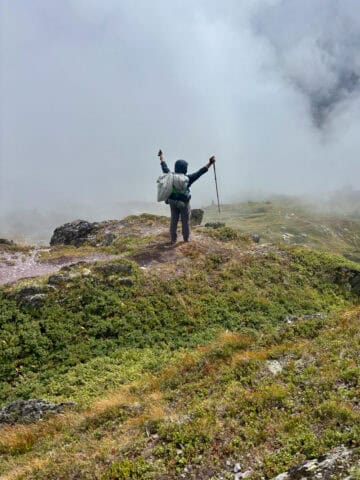

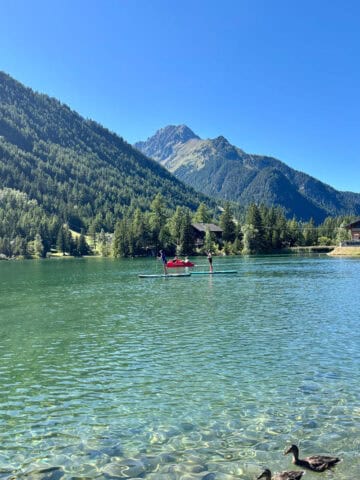
Leave a Comment: